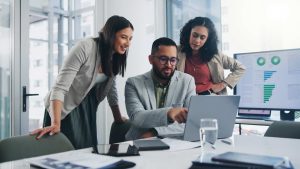Diverse workforce
The workforce of 2025 will be more diverse than ever, with a significant presence of Gen Z and Gen Alpha employees. Cheryll emphasized the crucial role a multigenerational workforce is going to play in coming years, stating “A special focus is on engaging the younger generation, helping them see their purpose, not just their jobs.” This sentiment is echoed by a report released by the World Economic Forum, AARP and the OECD, which stated that investing in multigenerational workforces was projected to raise GDP per capita by 19% over the next three decades.
Undoubtedly, this demographic shift presents both challenges and opportunities for organizations focusing on the need for soft skills, such as empathy and creativity, to foster a positive work environment and manage a diverse workforce.
Cheryll further noted that fostering collaboration among employees from different generations is essential. “What strategies can organizations implement to encourage collaboration among employees from different generations?” This question underscores the need for organizations to create an inclusive environment that values the contributions of all employees, regardless of their generational background.
Vince added to this discussion by addressing the fluidity of roles within organizations that comes with a diverse workforce.









 Behavioral Competencies
Behavioral Competencies Cognitive Competencies
Cognitive Competencies Coding Competencies
Coding Competencies Domain Competencies
Domain Competencies




















Would you like to comment?